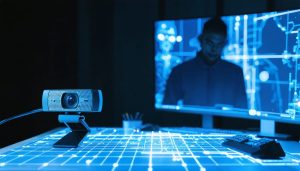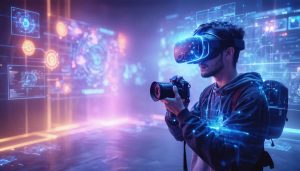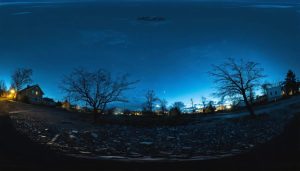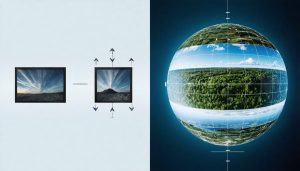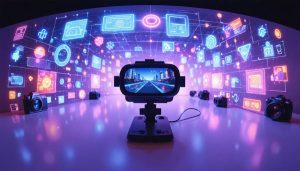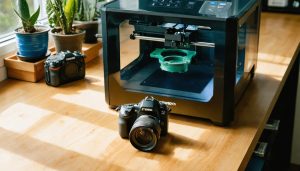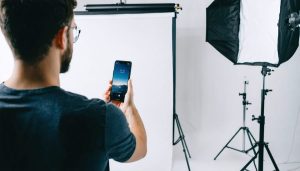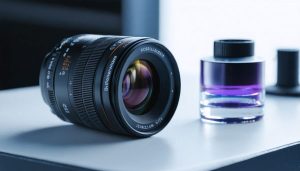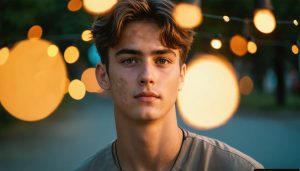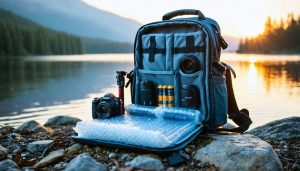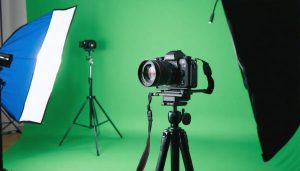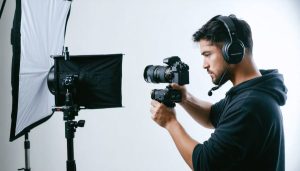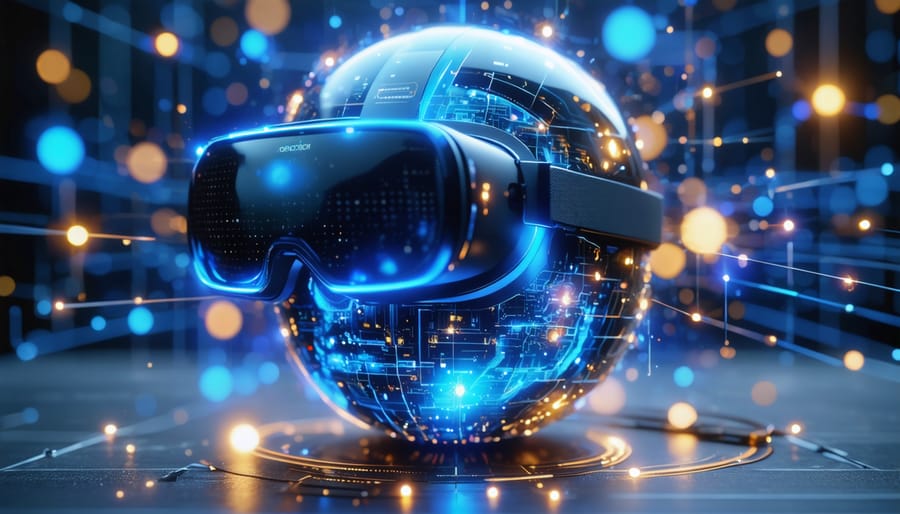
Artificial Intelligence is revolutionizing virtual reality photography, transforming how we capture and experience immersive VR experiences. Through advanced neural networks and machine learning algorithms, AI now enhances depth perception, automatically corrects perspective distortion, and generates photorealistic 3D environments from standard 2D images. Professional photographers wielding this technology can create stunning virtual environments with unprecedented realism and detail, while enthusiasts benefit from intelligent automation that simplifies complex technical processes. As these AI-driven tools continue evolving, they’re not just improving image quality – they’re fundamentally changing how we approach spatial photography and interactive storytelling. The convergence of AI and VR photography represents a paradigm shift in visual content creation, offering photographers powerful new ways to capture and share reality while pushing the boundaries of traditional imaging techniques.
How AI is Revolutionizing VR Image Capture
Real-time Scene Optimization
AI-driven real-time scene optimization is revolutionizing how photographers approach VR content creation. By leveraging advanced machine learning algorithms, modern VR cameras can now make split-second adjustments to ensure optimal image quality in even the most challenging environments. These intelligent systems work seamlessly with traditional VR camera techniques to enhance the overall shooting experience.
The AI assistance begins with exposure optimization, where the system analyzes the entire 360-degree scene in real-time, adjusting for varying light conditions across different angles. This is particularly valuable when shooting scenes with both bright highlights and deep shadows, ensuring balanced exposure throughout the spherical image.
Focus assistance has also seen significant improvements, with AI systems capable of identifying and tracking multiple subjects simultaneously across the entire field of view. The technology can predict subject movement and maintain sharp focus even as subjects move between different depth planes in the VR space.
Perhaps most impressively, AI-powered composition guidance helps photographers achieve more engaging VR content by suggesting optimal camera positioning and identifying potential points of interest within the scene. This real-time feedback helps both beginners and experienced photographers create more immersive and professionally composed VR experiences.
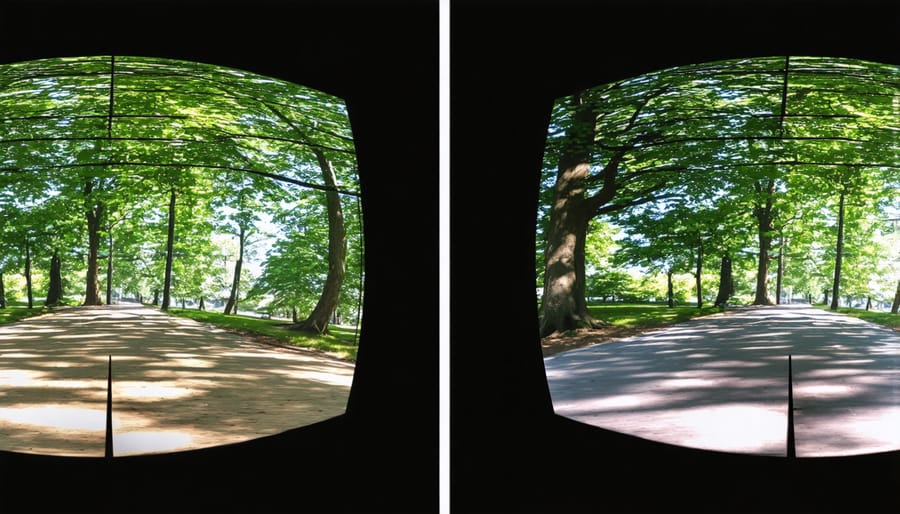
Intelligent Depth Mapping
Artificial intelligence has revolutionized depth mapping in VR photography, bringing a new level of immersion and realism to virtual experiences. By analyzing multiple image layers and utilizing advanced machine learning algorithms, AI can now create incredibly accurate three-dimensional representations of photographed scenes.
The process begins with AI analyzing visual data to identify objects, surfaces, and their spatial relationships within the frame. Unlike traditional stereoscopic methods, AI-powered depth mapping can extract depth information from single images by recognizing subtle visual cues like texture gradients, lighting variations, and perspective shifts.
This technology particularly shines in creating realistic depth effects for VR environments. When you move through a VR space captured with AI depth mapping, objects appear to have natural dimensionality and proper spatial positioning. The AI continuously refines these depth maps in real-time, ensuring smooth transitions and preventing the disorienting effects often associated with earlier VR experiences.
For photographers, this means being able to capture immersive VR content without complex multi-camera rigs or extensive post-processing. The AI handles the heavy lifting of calculating depth values, allowing creators to focus on composition and storytelling. The technology even works in challenging conditions, such as low light or scenes with complex geometry, where traditional depth-sensing methods might struggle.
Advanced Post-Processing Features
Automated Stitching and Blending
One of the most impressive applications of AI in VR photography is automated stitching and blending, which has revolutionized how we create panoramic and 360-degree images. Traditional panorama creation often involved painstaking manual adjustments to align and blend multiple photos seamlessly, but AI has transformed this process into a nearly effortless operation.
Modern AI algorithms can analyze hundreds of images simultaneously, identifying matching points and overlapping areas with incredible precision. They can compensate for exposure differences, correct lens distortions, and even adjust for slight camera movements during capture. What’s particularly impressive is how AI handles complex scenarios like moving subjects or varying light conditions across different frames.
The technology excels at creating natural-looking transitions between images, eliminating the obvious seams that often plagued earlier stitching methods. For instance, when photographing interior spaces, AI can intelligently blend areas where walls meet ceilings or handle reflective surfaces that traditionally caused stitching problems.
For VR photographers, this means spending less time in post-processing and more time capturing images. The AI doesn’t just speed up the workflow; it often produces better results than manual stitching, especially in challenging situations like low-light environments or scenes with dramatic dynamic range differences. The system can even suggest optimal shooting patterns and identify potential issues before they become problems in the final composite.
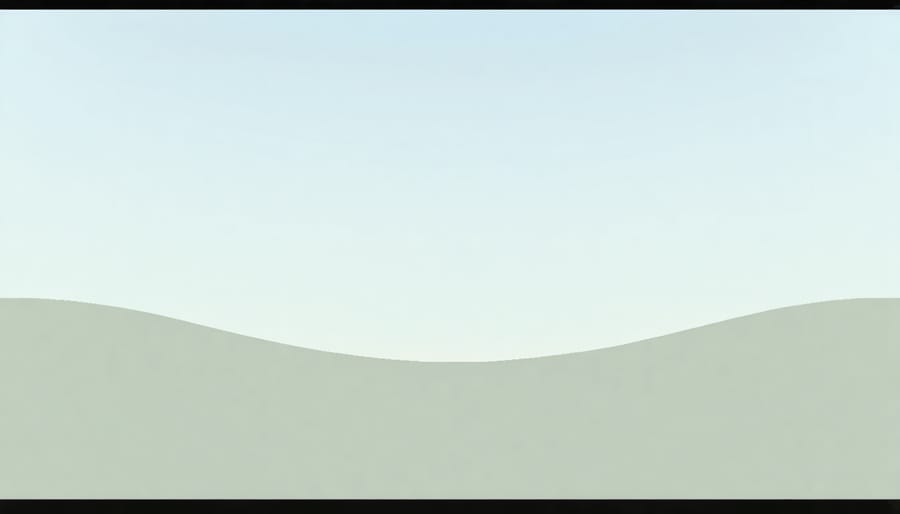
Smart Object Removal and Scene Enhancement
AI-powered object removal and scene enhancement tools are revolutionizing how we create and edit VR environments. These intelligent systems can identify and remove unwanted elements from 360-degree scenes with remarkable precision, saving hours of manual editing work while maintaining scene authenticity.
Modern AI algorithms excel at detecting and eliminating common scene distractions like tripods, light stands, and random passersby. What’s particularly impressive is how these tools analyze the surrounding environment to fill in removed areas with contextually appropriate content. For instance, if you remove a trash can from a grassy park scene, the AI will seamlessly extend the grass and surrounding elements to create a natural-looking result.
Beyond object removal, AI enhancement tools can dramatically improve overall scene quality. They can automatically adjust lighting conditions, enhance color balance, and even generate additional environmental details. Poor weather conditions in your original capture? AI can help transform overcast skies into vibrant sunsets or add atmospheric effects that weren’t present during shooting.
These tools are particularly valuable for real estate and tourism applications, where presenting pristine, idealized spaces is crucial. Photographers can now easily remove temporary construction equipment, parked vehicles, or seasonal decorations that might date or detract from the intended viewing experience.
However, it’s important to use these tools responsibly and maintain transparency about enhanced content, especially in documentary or journalistic contexts where scene authenticity is paramount.
Creative AI Tools for VR Photographers
Style Transfer and Filters
AI-powered style transfer and filters are revolutionizing how we create and experience artistic effects in virtual reality environments. Unlike traditional photo filters, these AI-driven tools analyze the entire VR scene in real-time, applying sophisticated artistic transformations that maintain depth perception and spatial awareness.
These intelligent filters can transform your VR environment into various artistic styles, from impressionist paintings to comic book illustrations, while preserving the three-dimensional quality of the space. For instance, you might walk through a Van Gogh-inspired virtual gallery where swirling brushstrokes appear to flow naturally around you, or capture memories in a noir-style virtual photoshoot where shadows and highlights adjust dynamically to your movement.
What makes these AI filters particularly remarkable is their ability to maintain consistency across different viewing angles and distances. As you move through the VR space, the artistic effects stay coherent and stable, creating an immersive experience that feels natural rather than artificially overlaid.
Creators can also blend multiple artistic styles or create custom filters by training the AI on specific artwork or visual preferences. This opens up endless possibilities for unique visual experiences in virtual reality, from educational art history tours to innovative virtual photography exhibitions.
Dynamic Lighting Control
AI-driven dynamic lighting control represents a groundbreaking advancement in VR photography, offering photographers unprecedented control over lighting conditions in virtual environments. The system analyzes scene composition in real-time, automatically adjusting lighting parameters to enhance depth, mood, and visual impact.
Think of it as having a virtual lighting assistant that anticipates your creative vision. When you move through a VR space, the AI continuously evaluates factors like subject position, ambient light, and shadows, making subtle adjustments to maintain optimal exposure and dramatic effect. This intelligent system can simulate various lighting scenarios, from natural sunlight filtering through trees to complex studio lighting setups, all responding dynamically to your movement and composition choices.
What’s particularly impressive is how the AI learns from your preferences over time. If you consistently adjust certain lighting parameters in specific situations, the system begins to anticipate these choices, streamlining your workflow. The technology can even suggest lighting configurations based on the scene’s emotional context or intended atmosphere.
For photographers transitioning from traditional to VR photography, this feature bridges the gap between physical and virtual lighting techniques, making the adaptation process more intuitive and creatively rewarding.
Real-World Applications and Future Potential
Commercial Applications
Businesses across various industries are leveraging AI-enhanced VR photography to create immersive and interactive experiences for their customers. Real estate agencies have been early adopters, implementing virtual real estate tours that allow potential buyers to explore properties remotely with unprecedented realism and detail.
Retail giants are using AI-driven VR photography to create virtual showrooms where customers can examine products from every angle, with AI algorithms enhancing image quality and providing contextual information in real-time. Fashion retailers like Zara and H&M have implemented virtual fitting rooms, using AI to adjust lighting and texture rendering for more accurate fabric representation.
The hospitality industry has embraced this technology to showcase hotels and destinations. Marriott International, for example, uses AI-enhanced VR photography to create detailed virtual walkthroughs of their properties, with AI improving image stability and automatically generating optimal viewing paths.
Museums and galleries are utilizing AI-driven VR photography to digitize their collections, with machine learning algorithms enhancing image quality and creating detailed 3D models of artifacts. The Louvre’s virtual tours now feature AI-powered image enhancement that reveals artwork details often missed by the naked eye.
In the automotive industry, manufacturers like BMW and Mercedes-Benz use AI-enhanced VR photography for virtual showrooms, where AI algorithms ensure precise color matching and realistic lighting conditions across different viewing devices and environments. These applications demonstrate how AI is transforming traditional photography into interactive, immersive experiences that drive business value.
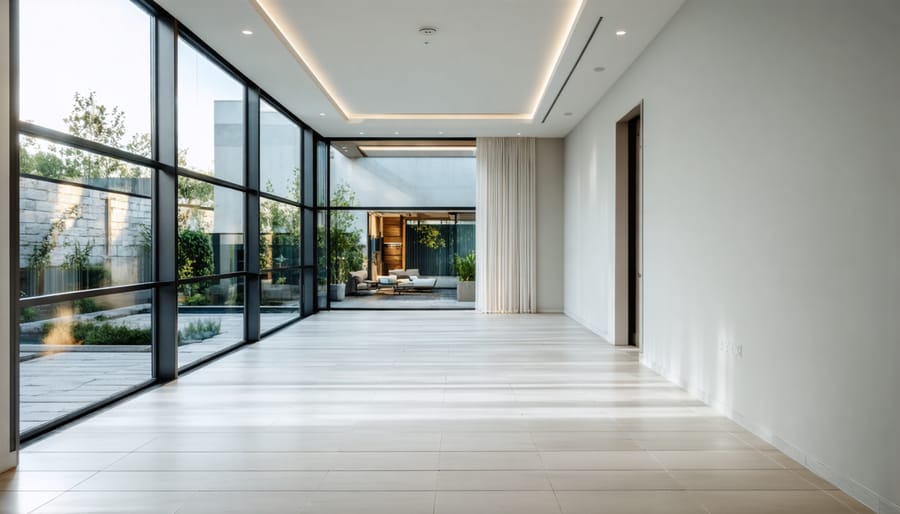
Future Innovations
As we peer into the future of AI-driven VR photography, several groundbreaking innovations are on the horizon. Machine learning algorithms are becoming increasingly sophisticated in understanding depth, perspective, and spatial relationships, leading to more immersive and realistic VR environments.
One of the most anticipated developments is real-time scene optimization, where AI will dynamically adjust lighting, composition, and depth-of-field as you move through virtual spaces. This technology will make VR photography feel more natural and responsive, adapting to user movement and viewing angles instantaneously.
Neural rendering is another promising frontier, where AI will be able to generate photorealistic textures and materials on the fly, significantly reducing the processing power required for high-quality VR experiences. This advancement will make professional-grade VR photography more accessible to photographers working with standard equipment.
AI-powered volumetric capture is set to revolutionize how we create 3D spaces from 2D images. Future systems will be able to construct complete, navigable environments from a handful of photographs, filling in gaps and creating consistent lighting across the entire scene. This technology will be particularly valuable for real estate photography and virtual tourism.
We’re also seeing development in AI-driven gesture control systems that will allow photographers to make precise adjustments in VR spaces using natural hand movements. Combined with voice commands, this will create a more intuitive editing experience, letting creators focus on their artistic vision rather than technical controls.
Perhaps most exciting is the emergence of AI co-pilots for VR photography, which will offer real-time suggestions for composition, lighting, and perspective while shooting in virtual environments. These assistants will help both beginners and professionals push their creative boundaries while maintaining technical excellence.
As we’ve explored throughout this article, AI technology is revolutionizing VR photography in ways that were unimaginable just a few years ago. The integration of artificial intelligence has not only simplified complex technical processes but has also opened up new creative possibilities for photographers of all skill levels.
The impact of AI on VR photography is particularly evident in areas like image enhancement, automated stitching, and depth mapping. These advancements have made creating immersive VR experiences more accessible while maintaining professional-quality results. For photographers just starting their VR journey, AI-powered tools can serve as invaluable learning aids, helping them understand the principles of virtual reality photography while producing polished results.
Looking ahead, we can expect AI to play an even more significant role in VR photography. As algorithms become more sophisticated, we’ll likely see improvements in real-time processing, more accurate scene recognition, and enhanced environmental mapping capabilities.
For photographers looking to embrace this technology, we recommend:
– Starting with AI-assisted VR photography tools to understand the basics
– Gradually learning manual techniques alongside AI features
– Keeping up with software updates and new AI capabilities
– Experimenting with different AI tools to find what works best for your style
– Maintaining a balance between AI assistance and creative control
Remember that while AI is a powerful tool, it should enhance rather than replace your creative vision. The most compelling VR photographs will always be those that combine technical excellence with human creativity and artistic judgment.

